The Elements
Building Blocks of the Universe
May, 2024

To understand the purpose of a system is good, but first you need to identify its components. In chess, the purpose of the game is to "capture your opponent's King." But first you need to know what a King is. You need to identify the pieces that can capture the King. To understand the rules of the game, you need to understand the elements.
The Universe is far more complex than a board game. But it can still be analyzed. A "magical" approach to understanding its purpose is to ascertain the intent of its Creator through a process called "divination." An alternate (cybernetic) approach is to declare "the purpose of a system is what it does."
The banner above depicts a 2,500 year ideological journey, capturing distinct philosophies of what constitute Universal Elements. We tend to cheer ancient theories of the Universe that align with modern thinking. But this exploration will end up looping back and away again. And the important thing to note will be lost wisdom from the middle.
There were competing theories over what comprises the Cosmic Elements, with overlapping timeframes among "the ancients." I use "ancients" as a relative term. The period from the first birth to the last death among these Greek philosophers was only 250 years. They knew of each other, but also studied their own "ancients," such as the Egyptians, who were writing base-10 "unknown quantity" (algebra) problems over 1,000 years before them.
This may seem like a history lesson, but it's actually a mystery. A detective story with clues to the Alchemists's search for the Philosopher's Stone. Little surprises along the way, but nothing dangerous. I hope.
The Atomic Theory of Democritus

I didn't find any ancient illustrations of Democritus's atoms. From their description I depict them as such:
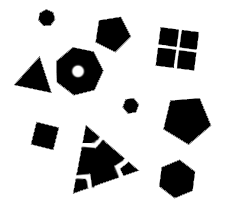
The Major feature of Democritus's model are the indestructible, indivisible "Atoms" from which all other matter is composed; and "the Void". Democritus considered a void necessary to allow movement of the atoms. He thought atoms were of different sizes and shapes, with little physical appendages which allowed them to hook together. He also thought there were atoms for things we consider emergent properties of matter, like Color. He also thought attribues like Goodness, Beauty, and human Souls were manifestations of material atoms."

An important note is that other famous philosophers did not share our concept of "the infinite void of space." Air is the medium over earth, they reasoned, so above the stars must be another medium; aether. As Above, so Below. Aristotle reasoned specifically against "the void" in his book Physics. Even into the 17th century, Rene Descartes was still arguing “It is contrary to reasoning to say that there is a vacuum or space in which there is absolutely nothing.”
The metaphysical position Democritius espoused is now called "Materialism," the position that nothing exists outside of a material manifestation. "Nothing exists except atoms and space, everything else is opinion” he wrote.
Plato and Aristotle were contemporaries of Democritus and strongly opposed his ideas. Not merely in opposition to his concept of the "void" but especially that he insisted reality was exclusively material. It's even recorded that Plato plotted to burn all of the books by Democritus, but was talked out of it by two Pythagoreans.
Pythagorean Triples and the Tetractys
The Pythagorean Theorem, a2 + b2 = c2 may be one of the few formulas non-mathematicians remember into adulthood.
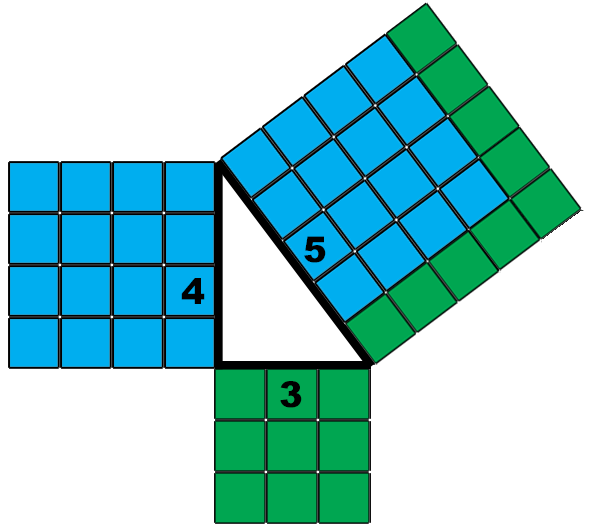
32 + 42 = 52
The 3-4-5 Triangle is the smallest of an infinite number of "Triples," but I suspect it was the most meaningful to the Pythagoreans. They are also credited with three of the five Platonic Solids (leaving only two for Plato himself to reveal). These solids are the Tetrahedron, Cube, and Dodecahedron. Each is made from matching 3, 4, or 5 sided polygons.

Something useful to note is that the Pythagoreans (Pythagorus and his followers) did not use numerals to represent numbers, or symbols like the exponent x2 to represent "Square." Square meant exactly that (like above). I find this is an extremely direct and practical approach.
The most important thing to know was that instead of tiny indivisible pieces of matter, Pythagoreans believed that NUMBERS and SHAPES (not atoms) were the Elements that made up the Universe..

It would be hard to overestimate the divine meaning numbers had for the Pythagoreans. They had prayers for and worship of certain numerical arrangements. These are also called figurate numbers, because they are both number and shape. The most important was a triangular number called the Tetractys.

The Tetractys is a mystical symbol consisting of ten points, arranged in four rows. Geometrically, the points form an equilateral (perfect) triangle. The four rows correspond to the classic elements, the four seasons, and sum (1+2+3+4) to the "sacred Decad" (=10), the all comprising "mother and keyholder of all."
When I was developing The Interrelation of Conceptual Structures at UCLA, I had an idea: That while the sequencial addition of points (from 1 to 4) built out Cartesian three-dimensional space, it also mirrored steps in a "Big Bang" model of creation: (1) Unity -> (2) Time -> (3) Space -> (4) Matter. The epiphany was that the concepts correspond because that structure is required for the mind to understand.
The "divine revelation" of the Tetractys strongly resembles the same idea (only 2,500 years earlier). The Pythagoreans explain the symbology, top layer of the Tetractys downward:
- A single unified point. The Origin.
- • Two points that make up the first line segment. One dimension.
- • • Three points necessary to create a (triangular) plane. Two dimensions.
- • • • Four points creating the first solid (tetrahedron). Three dimensional space.
All ten together represent the Creator and the Created.

Pythagorus wrote, "Number is the ruler of forms and ideas, and the cause of gods and demons." In other words, even the gods take a subordinate position to math.
Plato: Another Angle
Plato added two additional shapes to the existing 3-sided, 4-sided, and 5-sided solids to complete the set of "Five Platonic Solids." These new solids just included more triangles. Solids from other polygons are not possible.
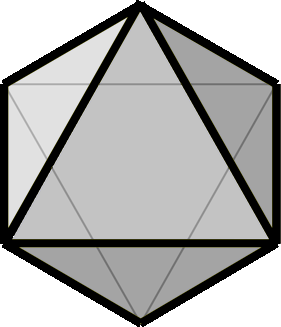
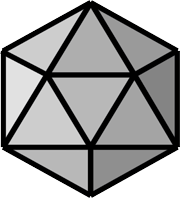
Plato went "all in" on triangles, pointing out that although the Cube was made of squares, a square is just two right triangles butted together.

So perhaps that is what helped Plato decide the Universal Element was not fire, air, earth, or water; atoms, or figurative "Numbers and Shapes," but rather the Triangle itself.
Aristotle's Aether
I realize this is a very glib summary of Greek Cosmology, but my purpose has been to track down a particular thought pattern, a conceptual structure, rather than provide a history of Western Philosophy. I've been familiar with many of the characters by name, but the lineage of their concepts is new to me, and perhaps you too. So I'm presenting that side. It's accurate, but many of the ideas end up utilized by Occult practitioners, abandoned by the formal education curriculum. In that sense they were previously "hidden away."
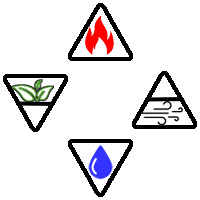
Note that each of the philosophers mentioned took the Four Classic Elements: Fire, Air, Earth, and Water, as a given backdrop to their own declaration of what the Universal Elements are. Aristotle placed the four classic elements on a "terrestrial sphere" and then added a fifth element, "Aether," which was incorruptible and populated the "Empyrean" or outer "celestial spheres." There were no indivisible material atoms and no void of space. Spheres embedded within spheres accounted for observed motions of the "wandering stars" (planets).
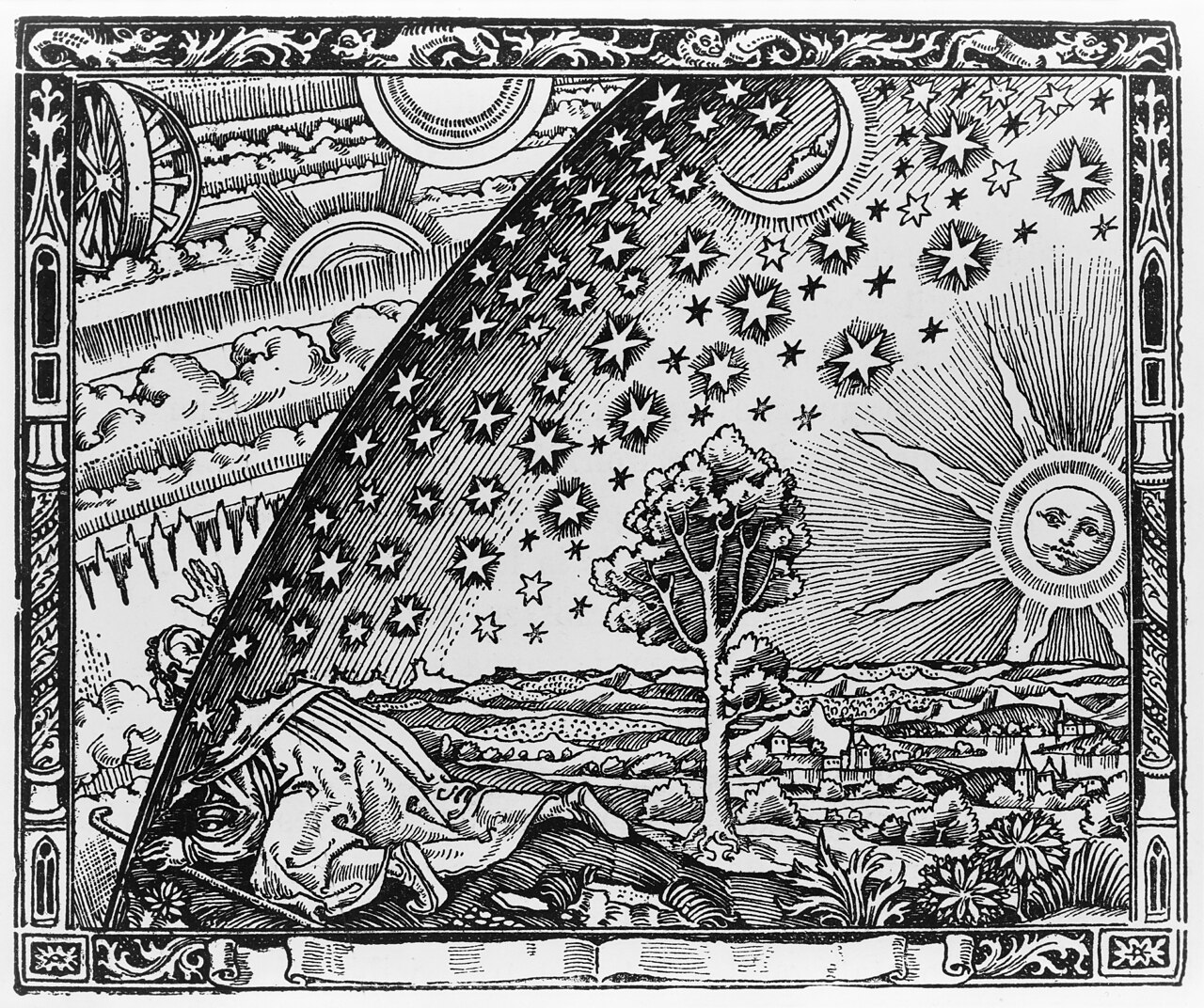
I explain further details of this image in my article Pareidolia. But before we leave what might be perceived as a cosmology based on ignorance, I would like to engage in a bit of empathetic perception. Without all the daily distractions of our man-made world, watching the behavior of the sky, and particularly the night-sky, reveals some fascinating cyclic behavior not otherwise experienced on the ground. The shortest cycle is the appearance of the Sun once a day. Grounded on the Earth we have zero perception of our planet moving. If the earth was spinning wouldn't there be a constant strong wind in a uniform direction? It's logical to conclude the behavior of the Sun is because it is rotating around us. The Moon, aside from also rotating around us, is going through a cyclic phase-change once a month. The timing of our seasons seem predictable by the count of 12 or sometimes 13 Moon-cycles. The "Heavens" appear as a very complex mosaic of lights, and a yearly cycle will be noticed by those paying attention. Five special stars, "The Wanderers" proceded against the the backdrop of the heavens, usually forward but sometimes with retrograde motion. From these personal experiences, postulating a model of transparent shells encircling us at graduated distances is not ignorant; it is observant. And if you were to posit a "location," providing control over the whole show, the place beyond the outermost visible sphere is where it would need to go.
Plato had his own "place beyond heaven" called "Hyperuranion", the perfect realm of Platonic Forms. Plato's philosophy was that the ultimate source of existence was generated from these Forms which could be aprehended by the mind alone. Sensory experience only told us of corruptible instances of these Forms. Aristotle's position was the opposite. He asserted the forms were attributes of real objects, and observations—sensory experience was essential to determining reality. Aristotle introduced Empiricism, the theory that all knowlege is derived from sensory experience, which eventually differentiated physical science from philosophy.
Along with Aristotle's philosophy came a continued concentration on his "Elements" which, perhaps in a nod to Plato, became symbolized by triangles! 🜁 🜃 🜂🜄
2,000 Years Later...
Aristotle's experimental approach to discovering reality maintains momentum today. Aristotelian physics survived well into the 17th century as a scholastic pursuit.
Gottfried Wilhelm Leibniz (1646 - 1716) has been called the "last universal genius" and was in contentious competition with Isaac Newton. Consequently, he is covered more in Comprisation Part Four.
In his 1690 book De Arte Combinatoria he used the below diagram as its frontispeice (facing the title page):
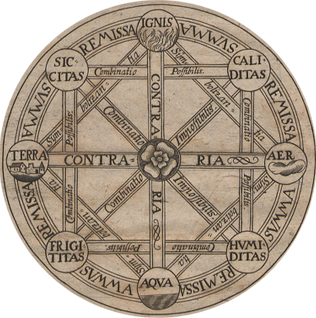
Looking at the cardinal points of his diagram we still see Aristotle's four Classic Elements: Fire, Air, Water, Earth. We are also shown the four Qualities: Heat, Cold, Wet, and Dry. The connecting bars identify which Qualities are opposites (Hot and Cold, Wet and Dry) and the opposite Elements (Fire and Water, Earth and Air). The notion is that each element shares a combination of two of the Qualities. Fire is hot and dry, Air is hot and wet, Water is cold and wet, Earth is dry and cold.
Selecting these Four Classic elements as somehow Universal always seemed awkward to me. The connections to hot-cold, wet-dry seemed even more forced. Thinking about why "Earth is cold" puzzled me. Until I made the connection: The Four Elements don't represent distinct substances, they represent the four states of matter!
- Earth —> Solid
- Water —> Liquid
- Air —> Gas
- Fire —> Plasma
If you take a Liquid and make it even colder, it freezes to Solid. If you heat it to boiling it becomes a Gas. Plasma might seem like a stretch for "Fire," which we now know is the chemical process of rapid oxydation. But the "Fires In the Sky" of Sun and Stars, and even Lightening, are the observable cases of Plasma (i.e. the Sun is not on fire).
The important takeaway is that Aristotelian Elements still held sway during the 17th-century Enlightenment. Atomism was still in the reject pile of cosmology. To me it explains how great minds like Newton (and Leibniz) could have pursued the Alchemist's "Philosopher's Stone" or at least conjecture that turning a base metal into gold was possible.

Our modern notion of "The Elements" is that they are atomic building blocks of all matter. They combine to make composite chemicals, but cannot be changed (through chemistry) from one to another. Gold (79Au), we now accept as a non-transmutable element.
The Periodic Table
The atomic model with a nucleus of positive protons encircled by matching negative electrons doesn't come into scientific use until long after Leibniz and Newton are dead. I have more about that development in Comprisation Part Three.

Many of the weights of modern chemical elements were known before the model of the atom. This is in part due to the Alchemical experiments and searching for the Philosopher's Stone. In addition to symbols of the Aristotelian Elements, and the Planets, a large handful of Chemical Elements were also included (Gold 🜚, Silver 🜛, Copper ♀, Lead ♄, Iron ♂, Tin ♃, Mercury ☿, Antimony ♁, Bismuth 🜾). The practice of Alchemy revolved around finding the proper combinations and sequences of these substances. This was essentially lab experimentation. As more was learned about these physical elements, hermetic Chymistry became modern Chemistry. But progress required removing the non-productive ideology of Aristotle's Elements.

Great progress has since been made in understanding all of the atomic elements. Chemical Engineering is a solid and productive branch of Science. Fire, Water, Earth, and Air are not taught in public school, relegated to Mystical and Occult studies only.

The popular "Mendeleev" presentation of the Elements seems very dry; a table with asymmetrical rows and columns, and even a discontinuity for two rows at the bottom; (they have placeholders above as "Lanthanides [57-71]" and "Actinides [89-103]" which doesn't help table symmetry at all.)
There is a connection to past hermetic pursuits, however. It is not merely the "Table of Elements" but the PERIODIC table of elements.

Mendeleev's great discovery was that creating an ordered arrangement, based on the atomic WEIGHTS, was key to identifying attributes, interactions, and even predicting existence of otherwise unknown elements. It's an amazing advance in understanding the Universe!
The Law of Periodicity was discovered from "bottom up" observation, with the pattern of behavior mathematically defined sometime later.
There are other ways to visualize the Atomic Elements, far more symmetrically, but I cannot vouch for the same veracity or utility. (Note below only the first Lathanide and Actinide are represented.)
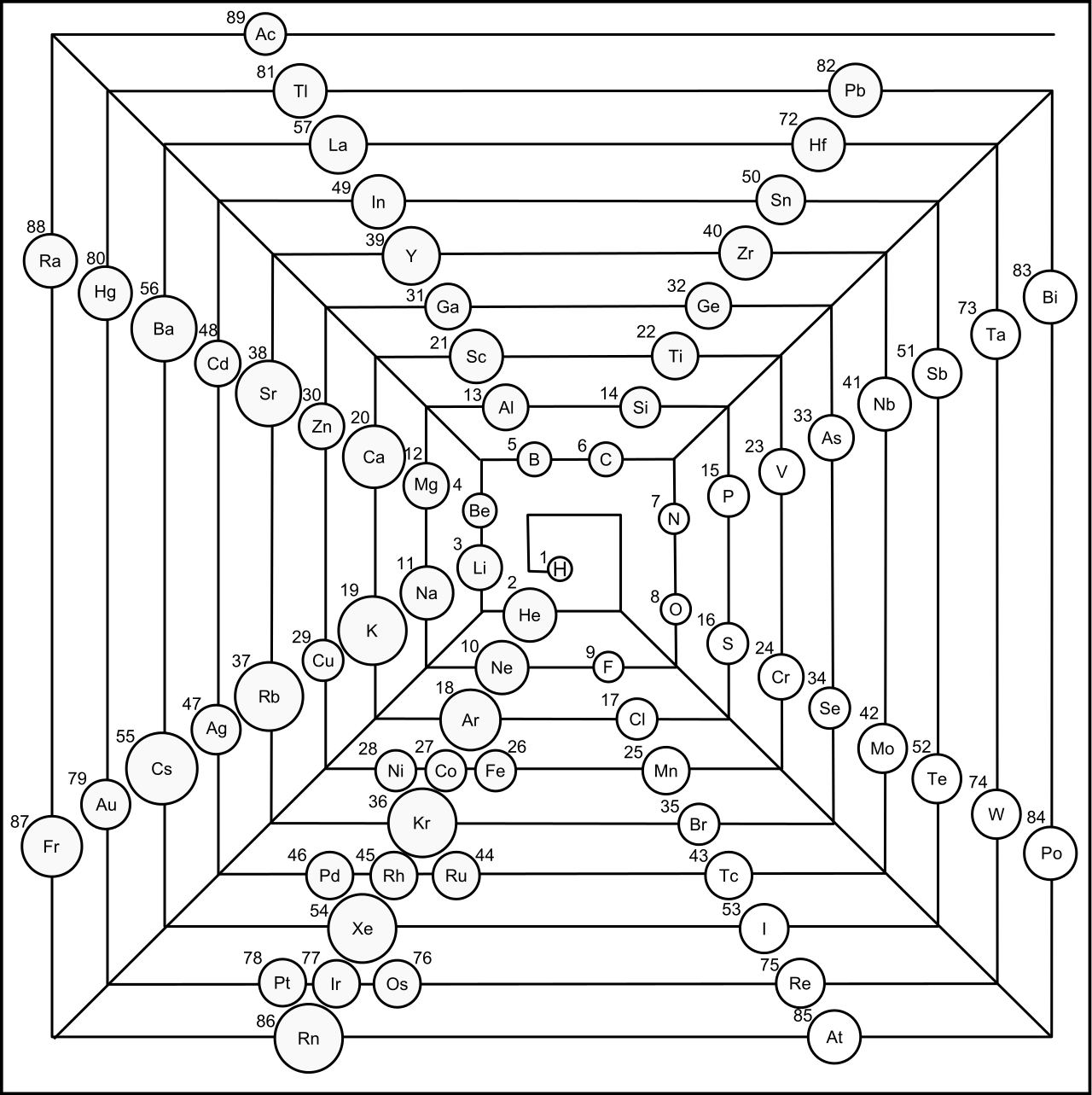
Here is another "spiral-type" representation. This time there are some different gaps. Both have Octagonal (eight branches) as their symmetry, which I find interesting. I didn't have a hand in creating any of these representations and left them large so you can compare all three if you wish.
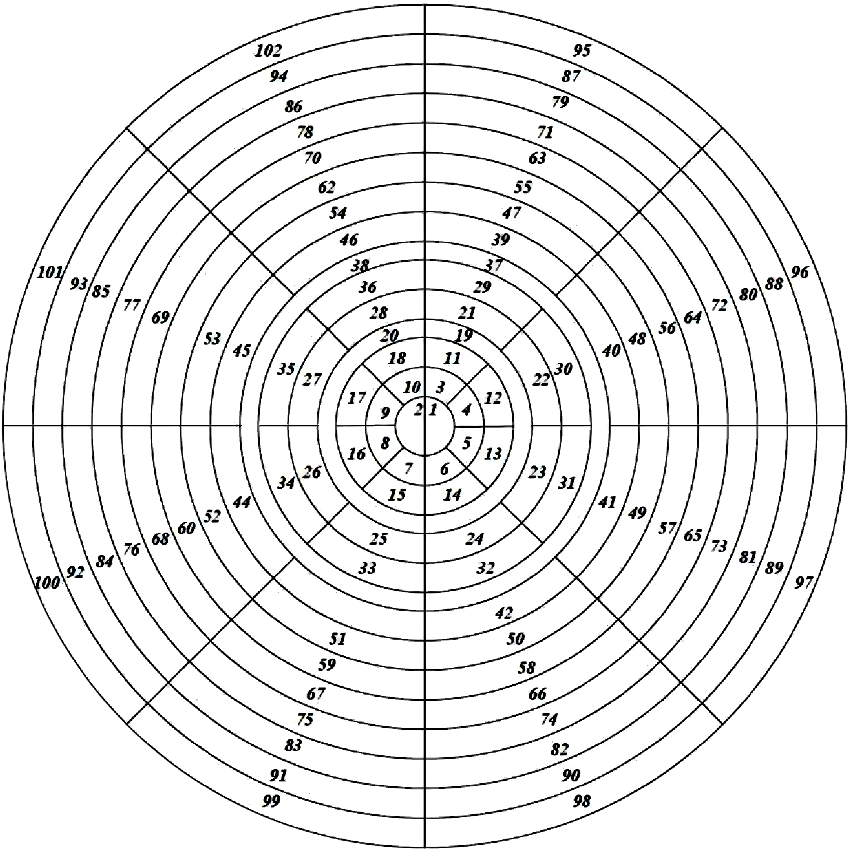
So is the Periodic Table the New Philosopher's Stone?

The Alchemists made a lot of predictions about what the Philosophers's Stone was, how it was created, and what it could do. If we compile the general themes, the Philosopher's Stone provided:
- Wealth though Instructions for Creating Gold.
- Health through an Elixer of Life.
- (Forbidden) Knowledge of the Secret Key to the Universe.
The first attribute—turning base metals into gold is the most associated with the Philosopher's Stone but perhaps the least important. If you hold the Secret Key to Universal Knowlege, making gold would be trivial. However, monetizing the claim to have Universal Knowlege seems much simpler if you advertise the gold-making directly.
Aristotle's model of the Universal had to give way before the atomic elements we recognize could flourish. The expectations of Aristotle's cosmology proved fanciful or exaggerated, and so the powers associated with Philosopher's Stone were as well. Promises of the Aristotelian Philosophers's Stone never materialized, but the post-Aristotelian Philosopher's Stone does exist as the Periodic Table of Elements. It is the Key to understanding the physical elements that make up all matter.
Chemistry, not Alchemy, is what provides reliable medicines. These elixers cure disease and extend life. Our understanding of DNA, Bioengineering, and Biochemistry all rely on principles revealed by this table. The simple explanation of the atom is each different element has a fixed number of protons in the nucleus and matching electrons that may be shared with other atoms, combining to form molecules. Chemical reactions cause atoms to join or break away from other atoms, but the nucleus of each atom stays unaffected. This reveals why alchemical (or even chemical) methods never produce elemental gold.
Hydrogen is the "Original Element" with ONE proton and electron. All other elements required the emense energy of NUCLEAR FUSION, from the original "Big Bang" or reactions inside the Sun, or Stars, to force-accumulate larger nuclei. Current scientific thinking is that the "Big Bang" was only good for the fusion of atomic numbers 1 through 4. (Wait... The Elements of Creation were 1, 2, 3, 4? Calling Dr. Pythagorus, your Tetractys is ready.) Stars like our Sun continue fusing these 4, but giant stars eventually collapse into supernova and their elemental fusions produce heavier elements like 26Iron. To get really the really heavy elements like 89Gold requires even denser bodies (neutron stars) crashing into one another. Consequently, Gold is exceedingly rare throughout the Universe.

A Terrible Secret is Revealed
The Periodic Table reveals that Mercury has a 80 protons in its nucleus and Gold has 79. Instead of waiting on stellar nucleosynthesis, a trick would be to remove a single proton from Mercury by "splitting its atom."
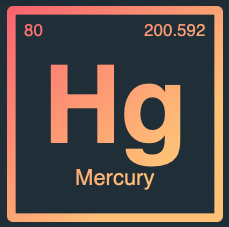 —>
—>
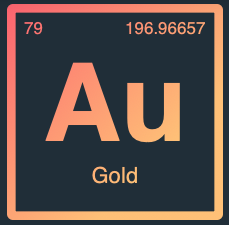
In 1941, three American scientists were the first to change atoms of Mercury into Gold through nuclear transmutation (by shooting ultra high-speed Helium isotopes at Mercury atoms to chip at their nuclei). This is not an economical method for producing gold, and the end result is radioactive. But it works. And this confirms our post-Aristotelian Philosopher's Stone. It also confirms the warning about the Philosopher's Stone being "Dangerous and Forbidden Knowledge." Only a few years later, these same nuclear physicists joined the Manhatten Project, testing the first nuclear weapon explosion in Trinity, New Mexico.

Oppenheimer was not involved in the transmutation effort, but was instrumental in the Trinity explosion. Many of the scientists were concerned about what their knowledge had unleashed.
Beginning, Middle, and End of All Things
I have proposed a split in the Philosopher's Stone: Aristotelian—corresponding with the Classic Elements, and post-Aristotelian—corresponding with modern Atomic Model. The former was a playground of charlatans and brought us incindaary weapons. The later brought us the nuclear bomb. But I think there is another Philosopher's Stone: It was the first, originating in Egypt where Pythagorus studied, and where the earliest accounts begin. It represents Hidden Knowledge, but its goal is much higher than producing change in material substance. It requires a revelation regarding numbers and forms utilizing clues throughout history.
I find it interesting that Democritus's Atoms and Void made a great comeback only to be again refuted by Werner Heisenberg and the Quantum Model of Reality.

But allow me to first to complete my article on "Doomsday Mechanism" before revealing any further "Forbidden Knowledge."
The other articles in Boundaries of Objectivity will explore this further. You can leave thoughtful comments or questions at the link below.